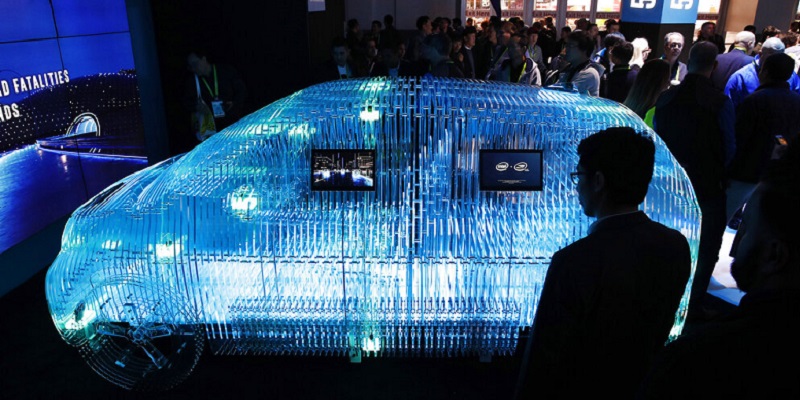Silicon Valley gurus told us we’d be commuting to work in robocars by now…
In 2016, the CEO of ridesharing firm Lyft predicted driverless cars would “all but end” car ownership...
Heck, even Tesla founder Elon Musk said robotaxis were just two years away…
That was in 2015.
-
Where are all the self-driving cars?
Sure, there have been some real breakthroughs.
A few months ago, Waymo—Google’s self-driving car arm—launched the world’s first robotaxi service in Phoenix. You can download an iPhone app and hail one of its driverless minivans, just like an Uber.
And earlier this year, Waymo announced its plans to start offering fully autonomous vehicles in San Francisco. It marks the first time the company’s driverless cars will operate in a major city without a human behind the wheel.
|
[Buffett’s $51 Billion Buying Spree] After years of sitting on the sidelines, Warren Buffett is buying up billions in stocks. That’s all thanks to a rare market “imbalance” returning for the first time since 2009. |
But for all the hype and billions of dollars invested, robocars are still in test mode. What gives?
In short, teaching a computer to navigate busy streets is hard.
Waymo trained its cars to stop at traffic lights… recognize pedestrians… navigate roundabouts... and handle dozens of other common situations we all face behind the wheel.
The problem is the thousands of weird “edge cases.” The random, “off script” scenarios.
Electric scooters zipping in and out of traffic… pedestrians suddenly stepping off curbs… kids dashing out to get a ball.
This isn’t a tech that can follow Silicon Valley’s “move fast and break things” mantra.
Driverless firms know any slipups causing a major accident could be a death knell for the industry.
-
Robotaxis are likely years away—but robotrucks are closer than you think.
Are you ready to share the road with a robot 18-wheeler?
In the next few years, you’ll likely be driving alongside a fully loaded semi-truck… with no one behind the wheel.
Remember, weird edge cases are the #1 reason self-driving cars aren’t on the roads today.
But trucks cruising along highways don’t have that problem.
Highways are mostly free of pedestrians… scooters… and kids chasing after balls. It’s just miles and miles of straight road.
And a freeway in Texas looks a lot like one in Minnesota or Utah. Once you master one stretch of highway, it is easier to master another.
-
That makes big-rig trucks the perfect fit for self-driving tech.
And we’re already seeing robo-semis on America’s highways.
TuSimple, the $2 billion robotruck pioneer, is now hauling freight between Texas, Arizona, and Florida. Its trucks travel hundreds of miles on public roads without a human driver.
Shipping giant DHL has already reserved 100 of TuSimple’s robotrucks.
Walmart is using driverless trucks to transport online grocery orders from one of its giant warehouses to stores in Arkansas.
Even Waymo is pivoting to trucking. Delivery giants like J.B. Hunt and UPS are using Waymo’s big rigs to deliver freight across several states.
-
Driverless 18-wheelers can rake in a lot more cash than robotaxis.
Robotaxis are a “sexy” idea.
I can’t wait for the day I can summon a supercomputer on wheels to come pick me up.
But ride hailing is a crappy business. Uber and Lyft still lose money on most rides. And the market is “only” worth $35 billion a year.
Compare that to the massive trucking industry. Truckers hauled roughly $800 billion worth of goods across America’s highways last year.
That’s a much bigger prize for self-driving startups to chase down. And there are many good reasons for trucking firms to “go driverless.”
Regulations limit truck drivers to eight hours of work before taking a break. And they can’t drive more than 11 hours daily.
But a robot truck doesn’t get tired. With self-driving big rigs, trucks could operate 20+ hours a day, stopping only to refuel.
That could save trucking businesses billions of dollars a year.
For example, with mandated rest breaks, it takes a human driver two to three days to move cargo from LA to Dallas. A robotruck could make the trip nonstop in 24 hours.
In short, self-driving trucks have broken out of their sandbox. Over the next decade, this tech has a real shot at disrupting the $800 billion a year trucking industry.
For the first time ever, investors are pouring more money into self-driving truck companies than robotaxi startups.
Mark my words: you’ll be driving alongside a fully loaded robo-semi before you hop in a self-driving taxi.
-
Here's a “backdoor” way to profit from robotrucks.
A handful of self-driving startups IPO’d last year.
But their stocks got crushed during the recent market selloff. Buying names like TuSimple, Aurora, and Luminar isn’t the best way to profit from this disruption.
You’ll soon have the chance to buy the little-known company quietly dominating the market for self-driving chips. Its computer vision chips serve as the “eyes” of many driverless vehicles.
Mobileye was acquired by chip giant Intel back in 2017 for $15 billion.
Mobileye dominates the market for the computer vision systems used to help driverless vehicles “see.” It’s already won contracts with more than 30 top automakers, including BMW and Audi.
And it’s raking in money. Mobileye’s sales jumped 40% last quarter, to $325 million. More robotrucks and cars means lots more chips. That’ll likely send Mobileye’s sales soaring to record levels.
Intel is planning to spin off Mobileye sometime in the coming months. That means it’ll soon be a separate company again, and you’ll be able to buy its shares.
I’ll let you know when it’s set to IPO.
Stephen McBride
Editor — Disruption Investor



